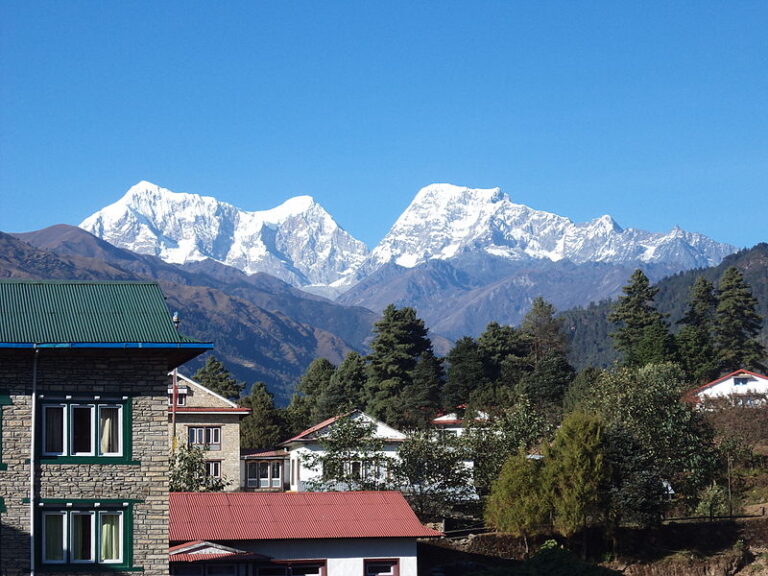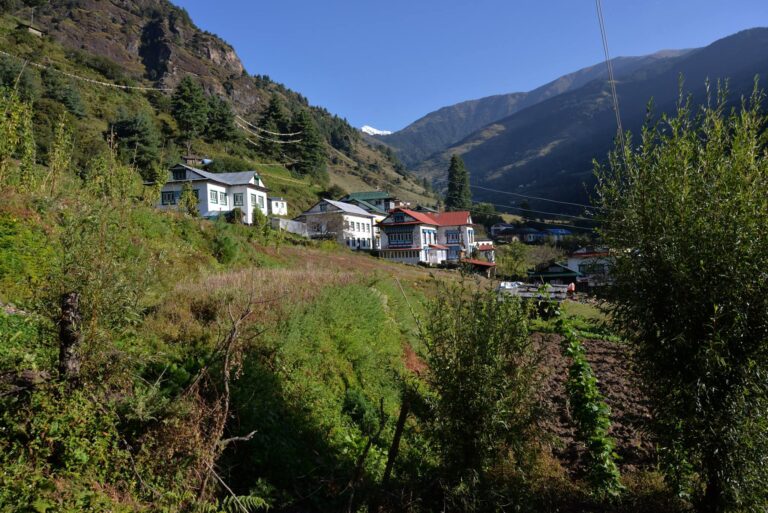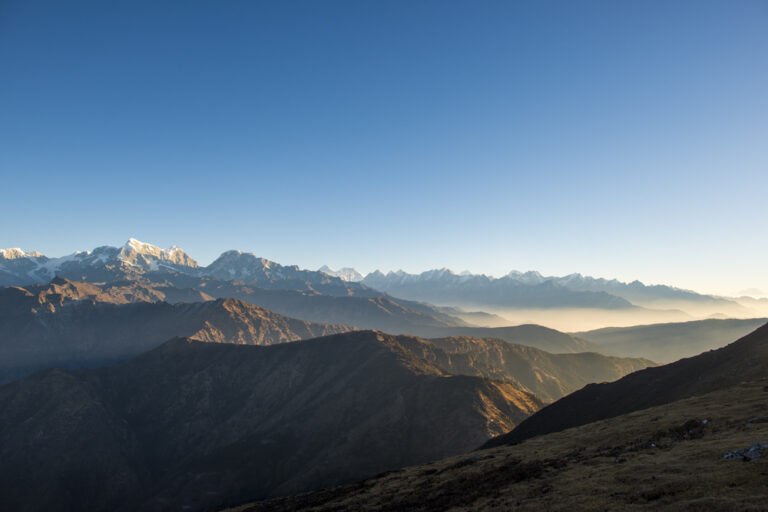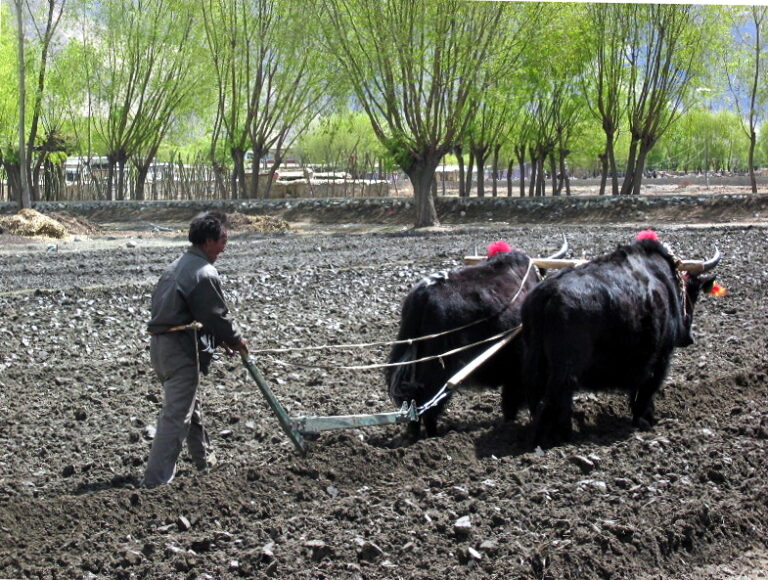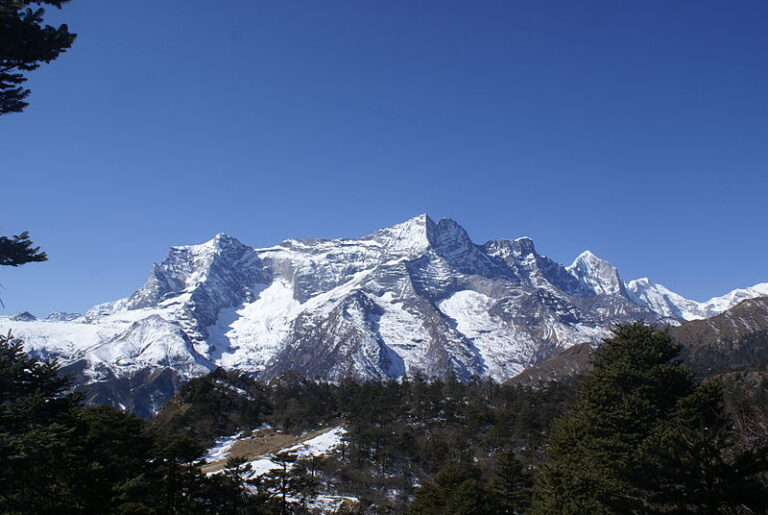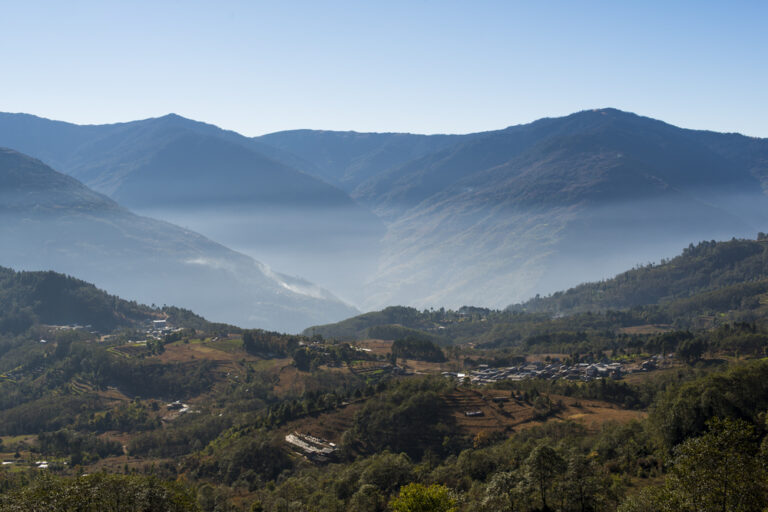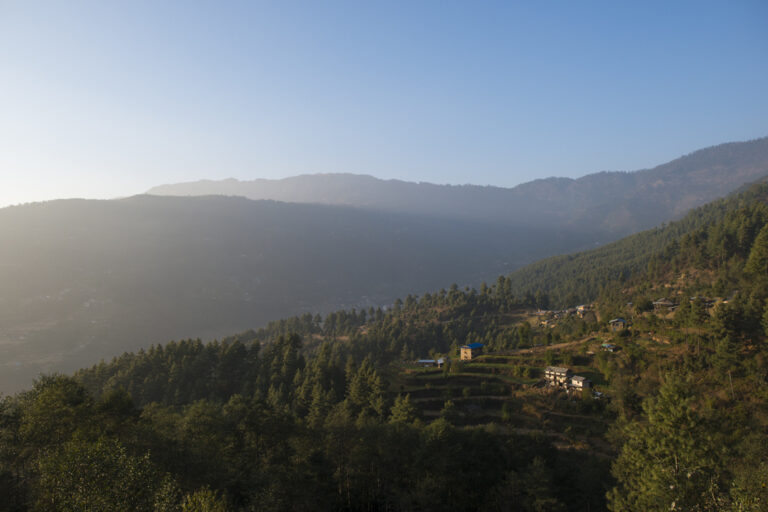Day 01 – Drive to Jiri Bazaar (1905m.a.s.l) – 6 hours drives – Jiri Bazaar is a small town of Dolakha district which is 203 kilometers far from Kathmandu city and the Jeep may takes an approximately 6 hours to get there from old Kathmandu bus park. During the driving period trekkers can see beautiful paddy terraced field, green hills, splendid view of Gaurishankar Himal, dozens of small villages and some the rivers called Sunkoshi, Tamakoshi and Bhotekoshi which are very famous for the river rafting.
Day 02 – Trek from Jiri Bazaar to Shivalaya (1770m.a.s.l) – 4 hours walks– there are two trails to get Shivalaya from Jiri Bazaar known as lower trail and upper trail but still upper trail is better than lower trail due to see better views of landscapes and terraced field. The trail leads through the terraced field, pine forest and pass by Hat danda, Chitre and Mali village which are inhabitant by the Sherpa, Jirel and Tamang people. Shivalaya village is settled just bank of the Khimti river and has half dozens of guesthouses for the trekkers.
Day 03 – Trek from Shivalaya to Bhandara village (2190m.a.s.l)- 5 hours walk) – the trail gently ascend from the yard of the guest house of Shivalaya and an approximately two hours of steep climb up trekkers will be in a small village called Kharsubass where available to sip cold drinks and hot drinks at the small tea-shop. After Kharsubass trekkers head to Deurali village through the lush forest of mixed trees. Deurali village is located just atop of the hill and offers to see splendid view of Gaurishankar Himal to the northward. From Deurali village trekkers have to walk down hill trail for an approximately one hour to get Bhandara village where dozens of guest houses are available and the local kitchen provides hygienic meals with warm hospitality.
Day 04 – Trek from Bhandara to Namkheli village (2810m.a.s.l) – 6 to 7 hours walks – begins of the trek, trekkers have to walk down for two hours to get Likhu khola (Likhu River) and the trail leads through the verdant paddy field to the Chaulakharka with the view of terraced field and gurgle sound of Likhu khola. In Chaulakharka trekkers have to cross the Likhu khola by suspension bridge and have to do short up and down hill trail for another three hours to get Namkheli village where trekkers may get chance to explore some monasteries and small Hindu shrines. There are some basic guesthouses in Namkheli village and the local restaurant serves delicious and hygienic meals with great welcome.
Day 05 – Trek from Namkheli to Nagur (3550m.a.s.l) -6 hours walks – especially, Nagur is camp site but still the local people built some basic guest houses and providing beds and basic foods for the tea-house trekkers. The place Nagur is surrounded by the oak and Rhododendron forest so offers to see many species of birds and butterflies. Trek from Namkheli to Nagur is little bit harder than previous days due to walk on a rocky path, bitter climb up and down hill trail but still when trekkers arrive in Nagur they feel like moving in paradise due to its natural beauties.
Day 06 – Excursion day for Pikey Danda – Pikey base camp – early in the morning trekkers head to Pikey Danda (Pikey ridge) that offers to the trekkers to see close view of Pikey I (4068 m), Pikey II (4065 m), Numbur peak (6959 m), Kongelumu peak ( 4484 m), Konje peak (4340 m), Gaurishankar (7146 m), Khatang peak (6853 m), Karyolung peak (6511 m), Mount Everest 8848 meters and some of the mystical places as Mahadev cave, Chumini cave, gigantic pasture land and Himalayan cheese factory.
Day 07 – Trek from Nagur to Lamajura (3530m.a.s.l) – 6 hours walks – the trail leads through the matured pine and Rhododendron forest doing by short but often uphill and downhill path to get Lamajura. While heading to Lamajura trekkers may pass a beautiful viewpoint called Jasebhanjyang (3520 m) that commands to see similar view with Pikey base camp or Pikey danda. Lamajura isn’t village but still local people built some guest houses which are surrounded by the dense forest of Rhododendron so during the Spring season the place looks like a piece of paradise due to blooming many colors of Rhododendrons.
Day 08 – Trek from Lamajura to Junbesi (2700m.a.s.l) – 4 hours walks– an approximately 45 minutes walk from Lamajura hotel, trekkers reach atop of the hill called Lamajura pass 3530 meters that commands to see charm landscapes, green hills, Rhododendron forest and superb view of Gaurishankar, Langgate peak, Konje peak and Kyogelumu peak to the northwards. From here, trekkers walk down through the lush forest of oak and pine to the Taktor village then the level trail leads to the Junbesi village pass by Thaktok Gompa and small Sherpa village.
Day 09 – Exploration of Junbesi village and Thupten Chholing Gompa – Junbesi is a beautiful Sherpa village surrounded by the hills and offers to explore many interesting places such as Hillary school, Souvenir shops and a old monastery called Thupten Chholing monastery which is located just top of the village. The Gompa is belongs to Tibetan Buddhism and believed to be built in 19th century.
Day 10 – Trek from Junbesi to Phaplu (2380m.a.s.l) – 4 hours walks – Trek of the day start through the dirt road along the Junbesi khola (Junbesi River) pass by Charghare, Benighat, Bhagpani, Rokdin and Kholaghari to get Phaplu Bazaar. The view of river valley, green landscapes and dozens of Sherpa village would be the major sights of the day. There are dozens of good guest houses are available in Phaplu Bazaar to celebrate last night of the trek.
Day 11 – fly back to Kathmandu and transfer to Hotel – early in the morning, trekkers fly back to Kathmandu. 35 minutes flight commands to the trekkers to see magnificent view of high Himalayan ranges including Mount Everest, Annapurna, Manaslu, Gaurishankar Himal, Ganesh Himal, Dhaulagiri ranges.
Day 12 – Final departure – After successful trip of Pikey peak trek you will fly back to your home with great experience of outdoor and many tales about mountain, jungle, colorful Nepali people and their culture, costumes and traditions that makes you a storyteller among your friends and colleagues.
